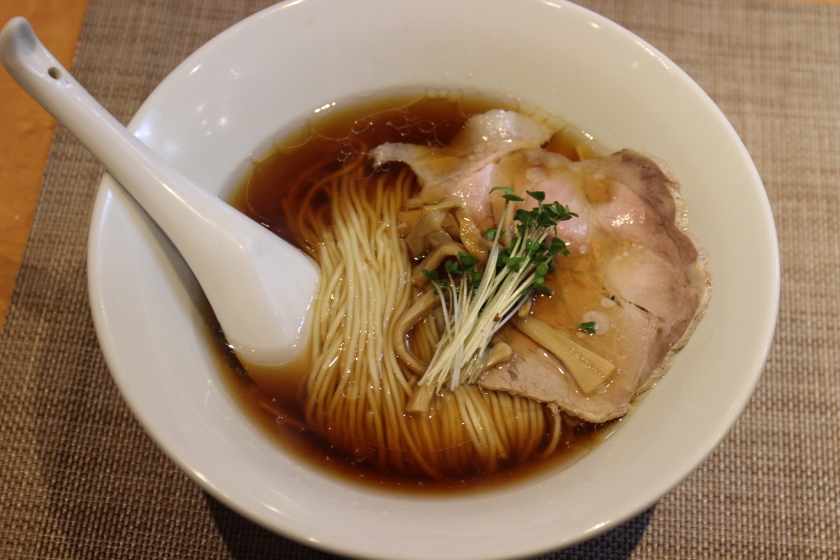Shibasakitei / 柴崎亭
If you can walk away from a ramen place and not feel heavy and bloated, you’ve possibly found a good thing. Even more so if you’ve eaten tonkatsu and tempura only 2 hours beforehand. Not that I did *cough* *splutter* Let’s move on…
Shibasakitei is a small joint to the west of Tokyo, not far from Chofu. Squeezed in alongside the Keio line tracks, this store is a couple of minutes’ walk from Tsutsujigaoka station. However, it takes its name from Shibaskitei, the next stop west where it was originally located, but moved for slightly more spacious premises.
With wooden paneling and big clear windows revealing a simple yet spacious counter for seating, it’s got the aesthetic of the modern ramen joint that takes pride in serving up soup beyond the greasy slop that is all too common. It’s an encouraging sign.
My friend, who is Chofu born and bred, assured me this was a popular place and we might have to queue, proudly showing off its rather high rating on the review website Tabelog.
We were lucky that we just beat the queue, with hungry customers arriving just after we’d been ushered inside. Faced with a vending machine for ordering, a queue behind and little time to consider all the options in depth, I went for the “safe” option and pressed the top left. This is always the standard dish in ramen stores and probably the best way to try the classic.
Chuka soba, 500 yen. It seemed too cheap to me. And seated at the pristine counter, watching the staff prepare food with T-shirts that proudly proclaimed “No ramen, no life, no MSG”, it seemed too cheap to be true. An additive-free high quality ramen? At 500 yen? WHAT? High-quality, stylish ramen places often charge three times as much!
Astounding me further, a beautiful little shop name card explained the ingredients that were to grace my bowl – a broth made from bonito and mackerel, with soy sauce, brown sugar, and rock salt; leek oil (yes, who knew that was a thing?); noodles made with alkaline water and domestic wheat; along with the spring onion, menma (fermented bamboo shoots) and of course, char siu.
My bowl arrived and it looked like it might be dull in its simplicity. But not so. That broth had just a hint of fish stock – a light smokiness from the bonito, enhanced by the tang of soy sauce, and brought to life by the sweetness of the sugar. The noodles were smooth yet firm, and had just the right level of bite. The char siu was on the lean side and thinly sliced like ham (I am more a fan of the thicker, fattier persuasion) but it packed a surprising amount of flavour.
Again. 500 yen. Is this real?
My friend got himself the tamanegi chuka soba (onion ramen, 500 yen), which I found way too heavy on the onion flavour, obliterating the subtleties of the broth. But looking along the counter, it was definitely very popular.
On the menu are other intriguing delights including duck ramen, pork salt ramen, wonton ramen, salt sardine ramen and so on… They even have a seasonal special, which can be checked on their Twitter account. It looks like I missed out on duck ramen, version 4! (And, apparently version 1 – 3 too!)
For fans of soy-sauce base ramen, I would recommend you making a special trip out to Shibasakitei. And could you please eat some duck ramen for me?
Shibasakitei 4/5 – A light bowl of ramen that never grows dull… and which is clearly made with the utmost care.
Where: 〒182-0006 Tokyo, Chofu, Nishitsutsujigaoka, 3−25−52
When: Mon – Fri lunch: 11:00~14:00 (LO 13:45), dinner 18:00~23:30 (LO 23:15); Sat, Sun, Hols :11:00~21:30 (LO 21:15)
Website: http://shibasakitei.com/






